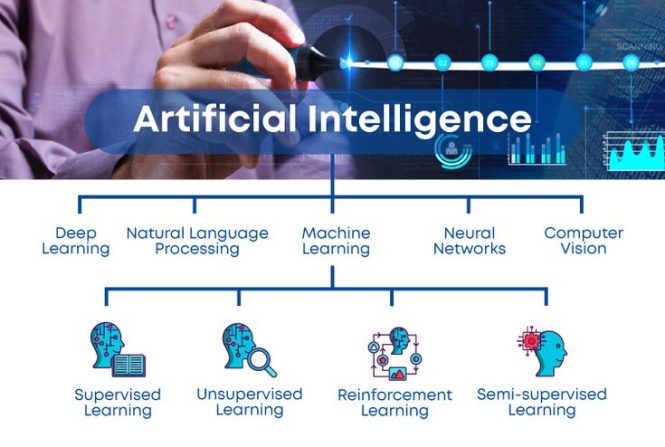
![]()
What is artificial intelligence and how does AI work? AI is rapidly evolving, impacting various aspects of our lives, from the smartphones we use to the medical diagnoses we receive. This comprehensive guide delves into the core principles, exploring the inner workings of AI systems, and examining their wide-ranging applications. We aim to demystify the complex world of artificial intelligence, enabling you to grasp the fundamental concepts and real-world implications. This guide will cover how AI learns, the different types of AI, and its applications in various fields. We’ll address common misconceptions and highlight the importance of ethical considerations.
Defining Artificial Intelligence
Understanding the Concept
Artificial intelligence (AI) encompasses a wide range of technologies designed to enable computers to mimic human intelligence. From basic automation to complex problem-solving, AI algorithms are increasingly integrated into our daily routines. Early forms of AI focused on narrow tasks, but advancements in machine learning and deep learning have expanded its capabilities significantly. Instead of simply following pre-programmed instructions, AI systems learn from data, improving their performance over time.
How AI Learns
Machine Learning
Machine learning (ML) is a core component of AI. It allows systems to learn from data without explicit programming. Algorithms identify patterns and relationships within data, enabling them to make predictions and decisions. Supervised learning, unsupervised learning, and reinforcement learning are key approaches. Supervised learning uses labeled data to train models, while unsupervised learning discovers patterns in unlabeled data. Reinforcement learning involves training agents through trial and error to achieve a specific goal.
AI Algorithms and Techniques
Deep Learning
Deep learning is a subset of machine learning that employs artificial neural networks with multiple layers. These complex networks excel at recognizing intricate patterns and relationships in large datasets, enabling tasks such as image recognition, natural language processing, and speech recognition. Recent advancements in deep learning have fueled breakthroughs in various industries.
Types of Artificial Intelligence
Narrow vs. General AI
AI can be categorized as narrow or general. Narrow AI, also known as weak AI, is designed for specific tasks and excels at them. Chatbots, recommendation systems, and spam filters are examples of narrow AI applications. General AI, also referred to as strong AI, is a theoretical concept encompassing human-level intelligence in machines. It remains largely unexplored and poses complex ethical and philosophical considerations.
AI Applications and Examples
Revolutionizing Industries
Artificial intelligence is transforming numerous industries. In healthcare, AI aids in diagnostics and drug discovery. In finance, AI powers fraud detection and algorithmic trading. In transportation, self-driving cars leverage AI for navigation and decision-making. These and many other applications are propelling AI into the forefront of technological advancement.
Ethical Considerations of AI
Addressing Bias and Fairness
The increasing use of AI raises important ethical concerns. AI systems trained on biased data can perpetuate and amplify societal biases, leading to unfair or discriminatory outcomes. Addressing these biases and ensuring fairness in AI systems is a critical area of ongoing research and development.
The Future of AI
Shaping the Next Generation
AI continues to evolve rapidly, impacting our lives in numerous ways. Future advancements are expected to further integrate AI into various sectors, from automation to personalized healthcare. Understanding the principles and applications of AI is paramount to navigate this transformative technological era responsibly.
Conclusion: The Impact of AI
Final Thoughts
Artificial intelligence is fundamentally changing our world, offering substantial opportunities and demanding careful consideration. As AI continues to advance, responsible development and deployment are paramount. Understanding the power of AI and its potential impact on society is essential for shaping a future where AI benefits all of humanity.
Frequently Asked Questions
What are the key elements of AI?
AI systems rely on various elements, including algorithms, data, and computational resources. Algorithms provide the logic and rules for the system to learn and make predictions from the data. The quality and quantity of data significantly influence the accuracy and reliability of the AI system. Powerful computational resources are necessary to execute complex algorithms and process large datasets, allowing AI to perform sophisticated tasks efficiently. A robust system that considers these key components is well positioned for success.
How is AI used in various fields?
AI’s application extends across diverse sectors, including healthcare, finance, and transportation. In healthcare, AI assists in diagnostics, drug discovery, and patient monitoring. In finance, AI plays a crucial role in fraud detection and algorithmic trading, improving efficiency and reducing risks. In transportation, AI powers autonomous vehicles, revolutionizing mobility and safety. AI’s role in these fields promises continuous improvement and innovation.
In conclusion, artificial intelligence is rapidly transforming our world, offering unprecedented opportunities and challenges. Understanding how AI works is crucial for navigating this new era. By exploring different AI types, algorithms, and applications, we can harness its potential while mitigating its risks. For a deeper dive into AI ethics, explore our dedicated resource page on responsible AI development. This page includes practical steps to help readers adapt to the evolving landscape of AI. Let’s work together to shape a future where AI benefits humanity.